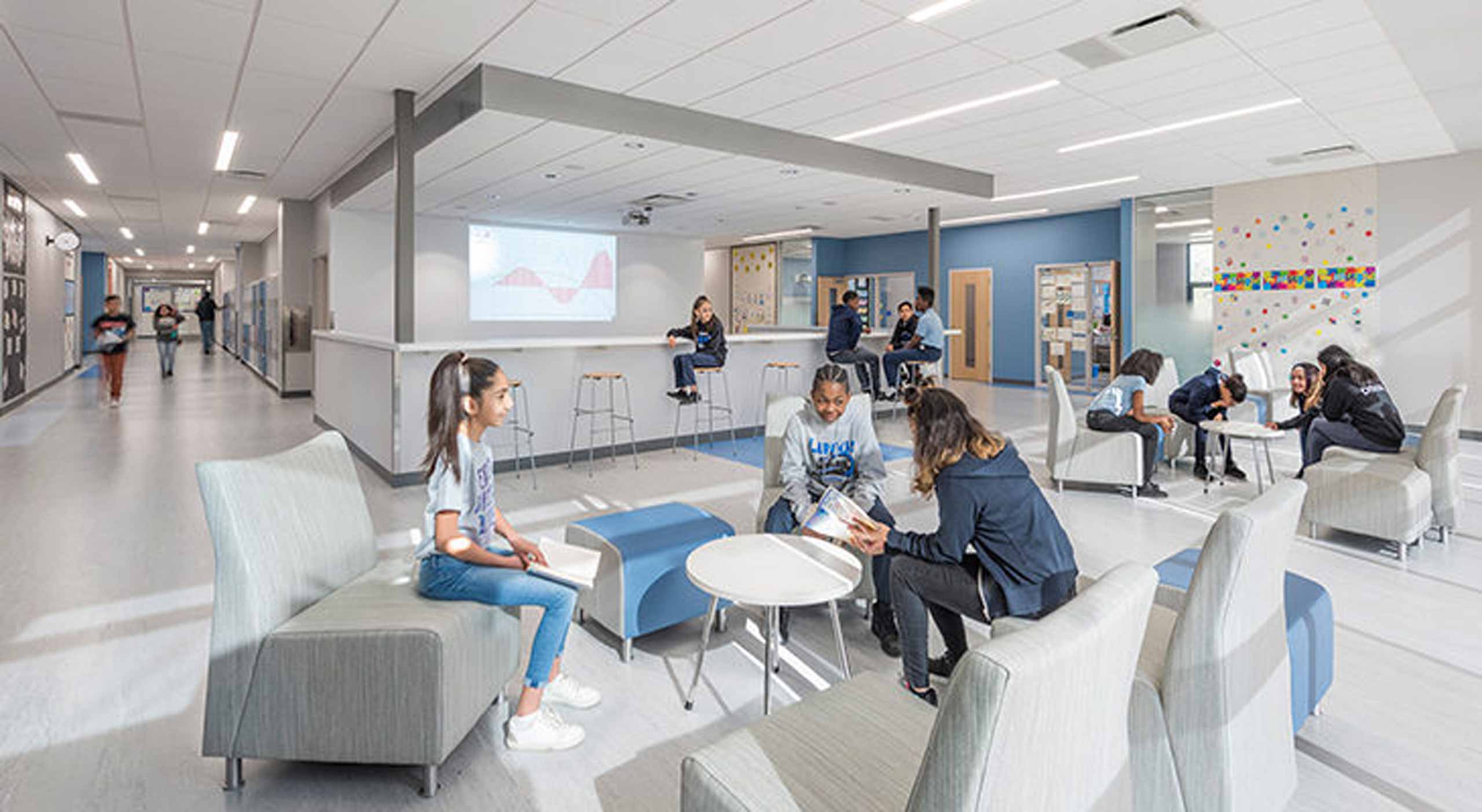
Laraway School in Joliet, Illinois takes top spot in 12-state John N. Shaw Award competition sponsored by Association for Learning Environments’ Midwest Great Lakes Chapter
Two years ago, a Laraway School girls basketball player walked into a gym at another school and said, “Are we allowed in here?” She had noticed how much better that other gymnasium was than her own school’s gym. This story illustrates the disparity between the old Laraway School and many surrounding schools.
The Joliet, Illinois school, undersized and inefficient, had changed little since it was built in the early 1950s. Additionally, nearly 98% of its students are low-income. Fortunately, the Laraway Community Consolidated School District 70C community knew it was time for a change, so much so that a new school achieved an 80% “yes” ballot on the referendum ballot.
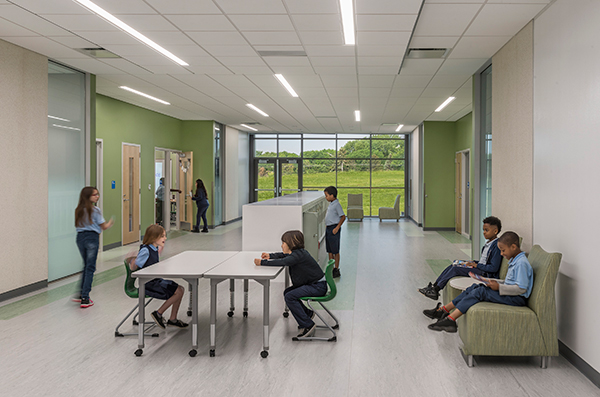
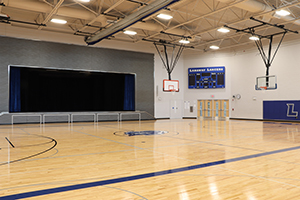
Today, Laraway students not only have an appropriately sized modern gym, but they also have an entire new preK-8 school that supports learning beyond the classroom, connects to the outdoors, encourages student and teacher collaboration, and even celebrates Joliet’s history. Critical to the development of the new Laraway School was the devotion of the Laraway Community Consolidated School District 70C administration, board, students, and community members.
It was that community investment that paved the way for the school to become the sole recipient of the 2020 John H. Shaw Award, issued by the Association for Learning Environments’ (A4LE) Midwest Great Lakes Region (MWGL). The Shaw award competition, which encompasses 12 Midwestern states and the province of Ontario, Canada, honors “good design that results from collaboration with educators, students, and community representatives.” Among the selection criteria are site and school planning, design solution, energy use, and flexibility.
The 119,000-square-foot Laraway School, designed by Legat Architects, doubles the size of its predecessor and offers 460 students a spacious, light-filled setting featuring age-appropriate neighborhoods.
According to the Shaw Award selection committee, “The Laraway School demonstrates great use of site and development of active outdoor learning spaces. The planning process was inclusive and really looked to maximize the cultural and community connection.”


Competition entrants were required to send in an electronic portfolio including a project narrative and project drawings and photos. The John Shaw Award jury consisted of planners and designers from across the nation, as well as a senior facilities development manager with the Los Angeles Unified School District.
Because the 2020 MWGL Regional Conference was canceled due to the COVID-19 pandemic, Laraway School will be recognized as the 2020 John Shaw Award winner at the 2021 MWGL Regional Conference in Kansas City, Missouri in March 2021.
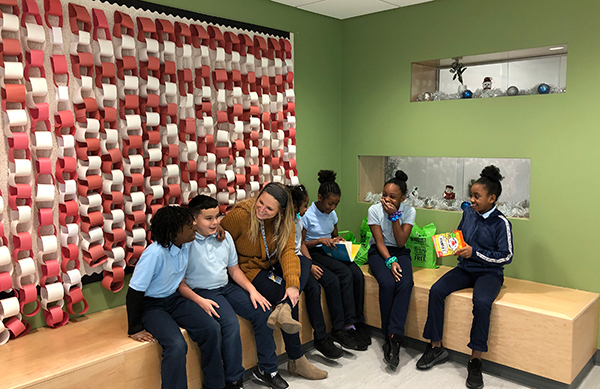

Neighborhoods: Geography, History, Culture
The layout of Laraway School positions four grade-defined neighborhoods around a central courtyard; each neighborhood, featuring a “front porch” and active learning hub, responds to its students’ ages, while also encouraging staff collaboration. The spaces within the school accommodate different sizes: coaching rooms (2-3 students), small group learning areas (8-12 students), typical classrooms (20-28 students), active learning and flexible learning areas (40-50 students), and large assembly areas (50+ students).
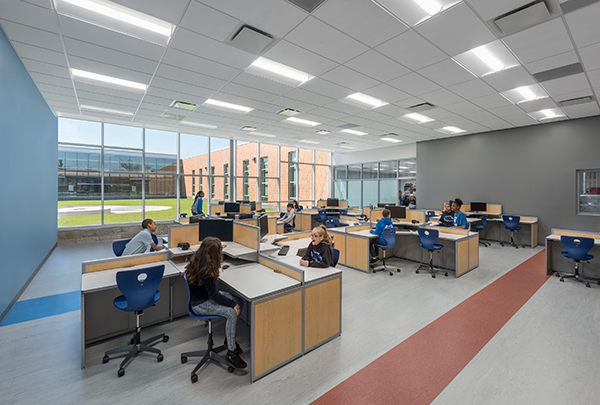
Laraway School also features a 7th/8th grade modular tech lab that helps prepare students for Joliet Township High School’s Career Academies. Each two-week module within the lab connects with an academy at the high school.
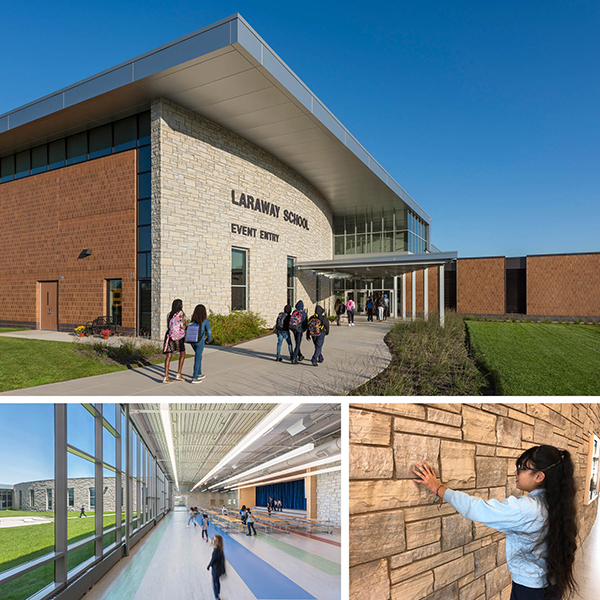
The design of Laraway School also references Joliet’s physical and cultural heritage:
- A linear layout, east/west orientation, unique brick pattern, and floor/lighting patterns celebrate the city’s farming history.
- The main corridor, inspired by the nearby Wauponsee Glacial Trail, arcs through the facility.
- A “quarry wall” that connects the two entrances and curves through the cafeteria and courtyard gives a nod to Joliet’s legacy of quarrying limestone.
The Laraway School design team included Northwestern University researchers, who prepared pre- and post-occupancy surveys. Both teachers and students attested that bullying has decreased dramatically in the new school, thanks to the neighborhood design.
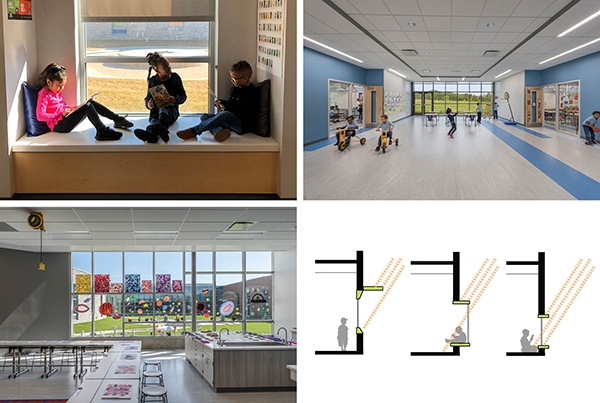
The design also employs several sustainable features:
- Roof and wall insulation exceed minimum R values for enhanced HVAC performance.
- All mechanical units have heat recovery to reduce the toll on the HVAC system.
- A daylight harvesting system includes east-west orientation, interior glass walls, and floor-to-ceiling exterior glass in each neighborhood.
- Pipes deliver stormwater to the outside, where it percolates into rain gardens.
The creation of the new Laraway School proves that districts serving disadvantaged families can unite communities to create cost-effective learning settings that emphasize student performance. The project also exemplifies school design that honors community context and history.
Get the whole story on Laraway School.
Contact us to learn more about educational design or comment below to share your thoughts on this post.


